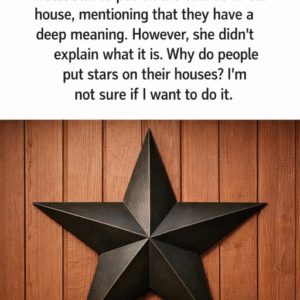Discovering Faces in Everyday Objects
In psychology, we have a fascinating quirk: our brains spot familiar patterns, particularly faces, in random objects. This phenomenon, known as pareidolia, is clearly illustrated in the image above. What seems like an ordinary tile floor reveals a faint face upon closer inspection.
What Is Pareidolia?
Pareidolia occurs when our brains interpret random stimuli—shapes, patterns, or sounds—as something meaningful, often a face. This explains why we see animals in clouds or faces in rocks, such as the visage in a worn floor tile.
The Tile Face: A Closer Look
In the image, the rough texture of the tile outlines a face with eyes, a nose, and a mouth. The “eyes” appear as darker spots, the “nose” as a central smudge, and the “mouth” as a faint curve. This ghostly face seems like a hidden character waiting to be noticed.
This instance of pareidolia transforms an ordinary tile into something mysterious and artistic. For some, this face evokes wonder or even eeriness, as if the inanimate world comes to life.
Why Do We See Faces?
Seeing faces in objects is more common than you might think. This tendency stems from our evolutionary need for social connection and survival. Quickly identifying faces was crucial for early humans to recognize allies and detect threats. Over time, our brains became adept at picking up even the slightest facial cues, sometimes leading to over-interpretation.
Scientists suggest this ability influences how we read emotions, understand social interactions, and create art. It highlights our brains’ capacity to find meaning, even when it exists solely in our minds.
The Artistic Side of Pareidolia
Pareidolia isn’t just a scientific curiosity; it has an artistic dimension. Artists have long drawn inspiration from hidden images in the world around us. This art form encourages us to look beyond the obvious and find beauty in the unexpected.
The tile face can be seen as natural art—an accidental masterpiece shaped by time, wear, and our imagination. It serves as a reminder that art can be found anywhere if we take a moment to notice it.
Conclusion
The next time you walk across a tiled floor, stare at a cloud-filled sky, or gaze at a textured wall, take a closer look. You might find a face staring back at you. Pareidolia reveals how our brains interpret the world, finding wonder in the ordinary. These moments of recognition remind us of the magic hidden in everyday life.
Related Posts

If he was alive, he would have been 91 years old: How would Elvis look today? Ai picture shows
If alive, Elvis Presley would have been 91-years-old. And to mark the occasion, AI has predicted how The King of Rock and Roll might have looked Artificial…

Backlash erupts as Trump performs an impression of trans athletes that viewers say is hard to believe
Trump Admits Melania “Hates” His Dancing Donald Trump made an unexpected confession this week.He admitted that First Lady Melania Trump “hates” his dancing. However, that wasn’t the…

This scene is unedited. Here is a throwback 90s clip of Kelly Kapowski from ‘Saved by the Bell’
Tiffani Thiessen brought life to Kelly Kapowski, the all-American girl next door and Bayside High’s ultimate sweetheart. Kelly was a cheerleader, a good student, and a kind-hearted…
We’re Letting You Go,” My Boss Texted While I Was In Germany On A Company Trip.
They Fired Me via Text in Germany; Cancelled My Company Card | Office Revenge We’re cutting you loose. Your company card is canceled. Figure out how to…

The stillborn baby was placed in his older brother’s arms, seconds later, a cry echoes loudly!
The room was cloaked in silence. A baby had entered the world, yet no cry followed. Olivia Parker had carried her second child with love and hope,…

Why Barn Stars Are More Than Just Decoration
The Story Behind Barn Stars: More Than Just Decoration Have you ever driven past an old barn or farmhouse and noticed a big, five-pointed star hanging above…